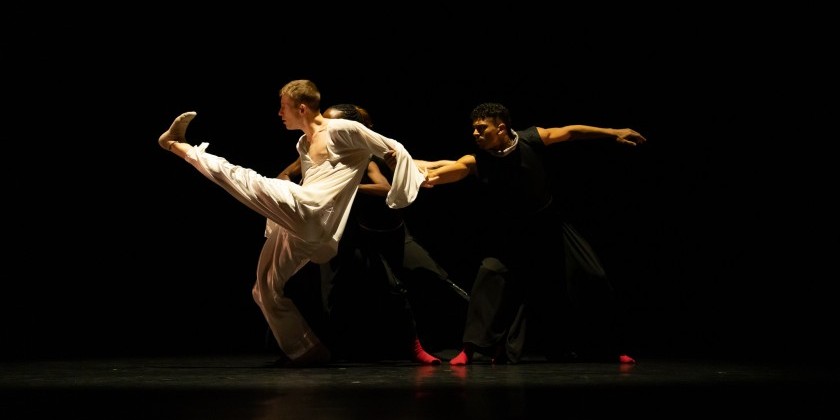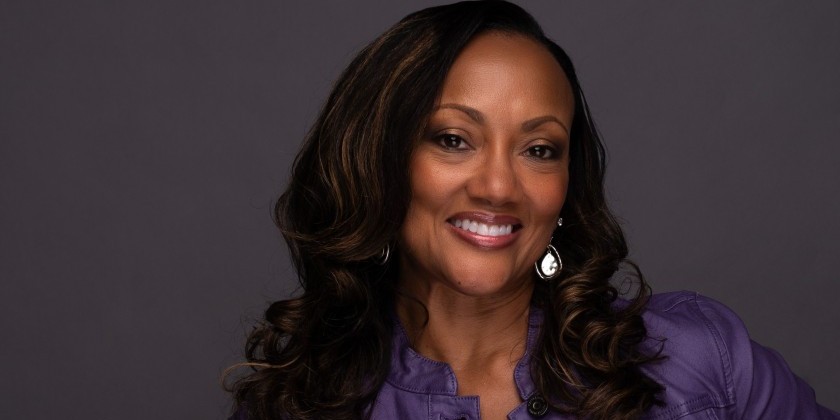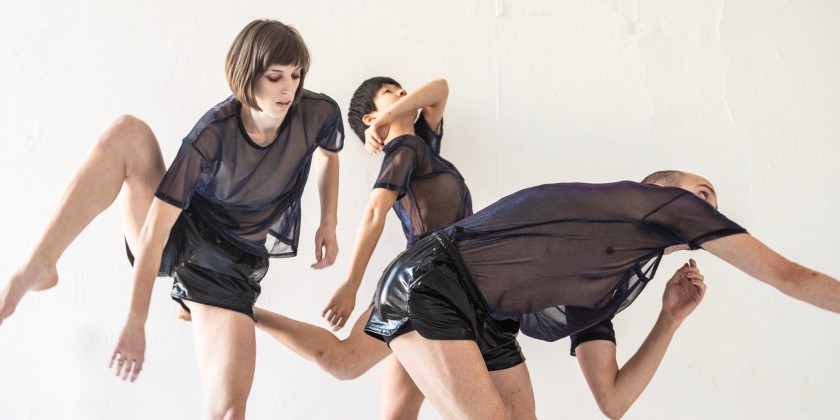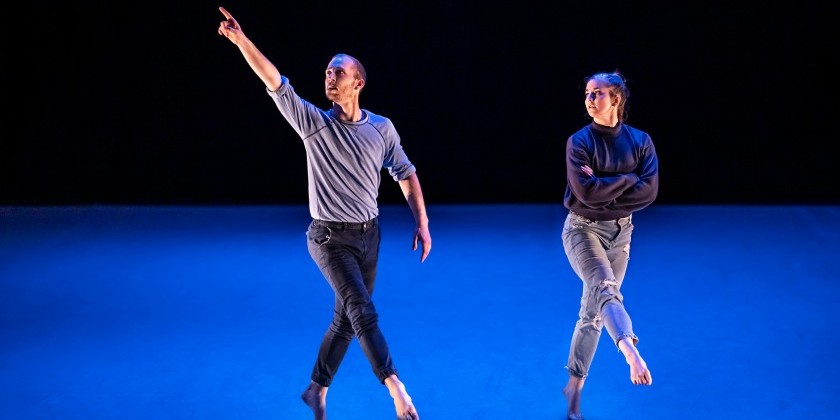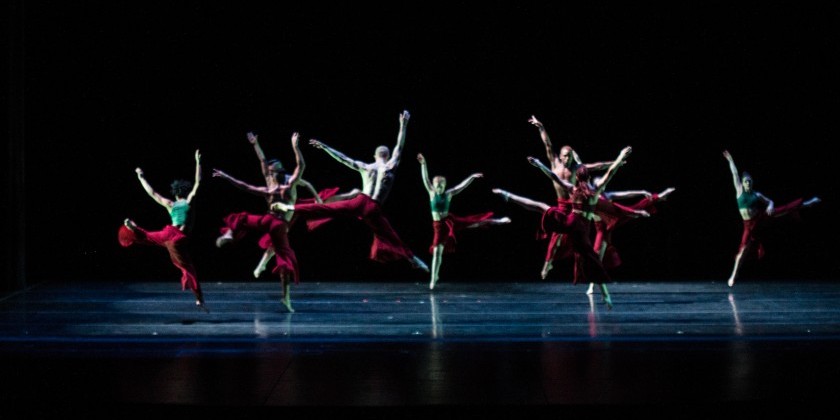IMPRESSIONS: Hubbard Street Dance Chicago with Ohad Naharin and Crystal Pite

March 8th, 2019
Decadance/Chicago — Segments from Ohad Naharin’s Creations: Anaphase (1993), Zachacha (1998), Naharin’s Virus (2001), Three (2004), Telophaza (2006), George & Zalman (2006), Max (2007), Seder (2007), Sadeh21 (2011)
March 15th, 2019
The Picture of You Falling — Choreography: Crystal Pite // Music: Owen Belton // Voice: Kate Strong
The Other You — Choreography: Crystal Pite // Music: Ludwig van Beethoven
Grace Engine — Choreography: Crystal Pite // Music: Owen Belton
Hubbard Street Dance Chicago’s latest two-week season at the Joyce Theater took no risks on unknown names or world premieres. The double bill including works of renowned choreographers Ohad Naharin and Crystal Pite (each with their own week) was less a trial of composition than it was of dancer execution. No doubt Hubbard Street’s sixteen dancers felt the pressure from previous performances of the works by Naharin and Pite’s home companies, Batsheva and Kidd Pivot, not to mention the much-missed Cedar Lake Contemporary Ballet.

Between Naharin’s famous dynamic range and Pite’s striking narrative rhythm, the company had quite a few tough notes to hit. Standing up to the challenge with remarkable discipline, their collective technical expertise rang loud and clear. Naharin’s work showcased the company’s ability to connect with the audience, enticing giggles and inviting authentic live participation. A good match for the rigor and precision of the dancers, Pite’s choreography zoomed in closer on them as individual performers.
Decadance is an ever-changing collage of excerpts from Ohad Naharin’s canon. This re-releasing and repurposing of content seems almost borrowed straight from a digital marketing strategy, but boy does it work here!
Hubbard Street’s version, Decadance/Chicago, opens with a smiley pyramid — all sixteen company members facing front in leveled formation, sporting jewel-toned tees. On their fingers, they count the “1-2-3-4” of the music. It is bright in the house, enough to notice the audience as an active partner, which, in hindsight, captures the mood of the evening. Naharin is as much driven by what is happening in the audience’s bodies as he is in his dancers’.

Freed from formation to flit and burst, the dancers march to their own drums now. Punctuating beats with little bum bumps and hip pops, their movement seems a natural and welcome interpretation of the sound. This flurry cross-fades to a grounded, commanding section featuring five women in black. A voice repeats the words of Charles Bukowski: “Make it babe, make it / A house, a car, a belly full of beans . . .” The women move powerfully en masse, lunging low, their hands above their heads like crowns. Their feminine force and sensuality feel right and newly relevant.
Soon, we are asked to stand to participate in a live survey. A dancer asks us to sit if “we make more than $250,000 a year” or “we have read Italo Calvino” or “we can point in the direction of Mecca” among other things. We finally sit when it’s not our birthday — all but one girl from the balcony surrounded by friends. They are delighted when she comes to the stage for an impromptu scene and a white balloon.
This is not the end of the audience participation — and not even the height of it. In perhaps the most gripping section, each performer selects one audience member to join them in a half-led/half-free social dance on stage. As both shy and dominant personalities emerge within the chosen participants, the question of autonomy within public performance rises. Behaving, each person earnestly tries to follow and contribute. Only one tries to milk the spotlight, which the company allows, lying flat on the ground until she makes her exit.

As soon as a semi-circle of sixteen chairs is revealed, the audience cheers in recognition of “Echad Mi Yodea” from Minus 16. The energy of all sixteen suited dancers is harnessed in this driving composition of layered canon and unison.
When they return in the colors they began the evening in, they form three long lines. As each performer reaches the head of the line, they explode into their own unique moves, some witty, others showy, no two alike. This zany collage of personalities is fulfilling, but it is nearly impossible to distinguish one dancer from the next. I was hungry to see them alone, to get to know them better.
In two stirring narrative duets making up the first half of Crystal Pite’s evening, I got such an opportunity.

Caught in a stark spotlight during The Picture of You Falling, Craig D. Black Jr. is sharp as a tack — falling, popping, isolating each part of his long figure as a voice tells his story: “This is a picture of you falling . . . This is the sound of your heart hitting the floor.” Ana Lopez, in turn, explores every sinewy extreme. Their seamless partnering teamed with ice-cold departures lands Pite’s narrative of a lost love in a work that could easily be lauded solely for its design and clever lighting. To me, it’s all about the dancing.
In a similar vein, The Other You uses abrupt blackouts to end complicated movement sentences. Michael Gross and Andrew Murdock, nearly indistinguishable, are tangled in a codependent power struggle. The space buzzes with electricity as one is puppeted by the other, every joint moved by a partner’s command. The style is, at times, lyrical and almost commercial in feel, but the skill of the dancers keeps us locked in.

In Grace Engine, the company is at a fever pitch. Emboldened, they take long strides in perfect formation, a familiar image of an unrelenting urban landscape passing by. Hubbard Street, unlike many smaller dance companies, can achieve these undulating body landscapes because it has the numbers.
Sixteen bodies, slightly variant in level and shape, create a lingering echo of motion like the slowed shutter speed of a camera. We are one in a sea of many, yet our humanity links us, for better or worse, to the larger engine of life. As the beautiful Rena Butler reaches wingward, her longing ripples down the entire line. The ensemble is again the star.








